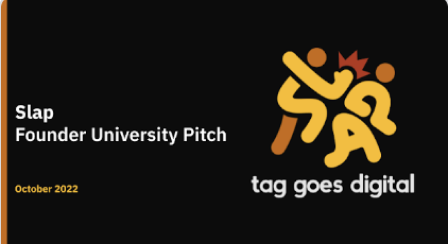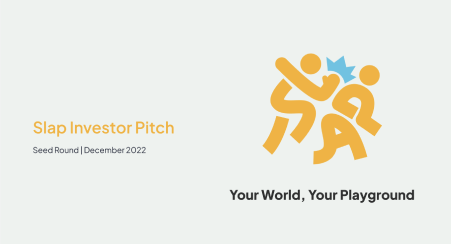Reviving the playground in the digital era
- Ashish Bhatia
- Jun 8, 2023
- 4 min read
Updated: Jul 3, 2023
FC'22 Member Sean

The social gaming problem
At the height of COVID, nearly half of all people (3.2 billion!) fell into the category of “gamer”. I was no different. Video games have been a core part of my identity since childhood. I learned to type in order to play Starcraft 2, and I wrote my first ever line of code in an attempt to make a video game of my own.
With the continued explosion of video games (the already behemoth market is expected to nearly double from 2020 to 2025) has come a new kind of problem: the replacement of the childhood playdate or teenage hang-out with the Discord call and Xbox party.
Increasingly, kids build and maintain their friendships from the darkness of their basement, face illuminated by a glowing screen and conversation captured by a headset.
An interview I conducted with high schoolers in Philadelphia paints this with a surprising anecdote: Teens reported not just replacing social events with gaming, but actively disbanding a face-to-face event in order to head home and play with those same friends online.
Conducting further interviews, I found this sentiment was not isolated. Interviewees reported a distinct division between gaming with friends and interacting in person. It was an either or, not an “and”.
While the behavior was prevalent, it was not desired. Many of these same people I interviewed expressed unhappiness with the trend toward digital existence, especially after its extreme acceleration due to the COVID pandemic.
Discussing the idea with Stephen Lane, UPenn Professor of Computer Graphics and Game Technology, he explained to me even video games stem from the basic evolutionary goals of play. The innate goals of skill development, friendly competition, and social connection that fuel some of the purest forms of play, hide and go seek or tag, are the same goals that attract teens and adults to video games. How could I revive this purity of playground play in the digital era?

A Massive Outlier: Pokémon GO
With this goal in mind, I looked towards the existing video game industry to see what might already tackle this problem. One primary giant stood out: Pokémon GO. The game, developed by Niantic, took the mobile gaming industry by storm in 2016, boasting 500 million downloads and hundreds of millions of monthly active users. Bridging GPS-powered location based gaming and visual AR, the game infused the Pokemon world into our own and brought friends and aspiring Pokémon trainers together in the real world.

Hordes of Pokemon GO players gather to catch em 'em all.
Niantic followed up the success with an interesting decision: to pursue improving the visual AR capabilities of their games and build out augmented reality (AR) platform technology. Confusing really, as only 22% of the user-base reported consistently using the feature in Pokemon GO. Not to mention, if Niantic’s goal is to “Draw people outdoors” and “Create connection”, visual AR through the phone screen seems to do exactly the opposite. (I mean look no further than the image above). Hundreds of people outside, yet every one staring down at their phones.
Focusing on improving visual AR has shown to be a lukewarm strategy at best. Niantic has yet to recreate the success of Pokemon Go with its newer titles, and other studios who have taken inspiration have also generally flopped.
The real successes of Pokemon GO were the location based gameplay, and the “world augmentation”, or the feeling of fantasy and magic that the world we live in was now intertwined with the world of Pokemon.
Where Niantic let you play games on your phone, projected into the real world, I hoped to build games that are played in the real world, with assistance from the phone.
Taking inspiration from a national tradition
To achieve this idea of a video game that is played in the real world but assisted by the phone, I looked for examples of classic games to build from. Naturally, something like Tag or Hide & Go Seek seemed like great options, but I wanted something that appealed to more than just the playground age group.
Enter Senior Assassin, a game played nation wide amongst high school seniors. It’s like the grown-up version of tag. Weeks to months long, persistent, massively multiplayer, and often bet on with prize pools reaching thousands of dollars at large high schools.
Not only was the existing game and demographic great, but the gameplay and process was ripe for digital improvement. Digitally enhanced Senior Assassin seemed like the perfect MVP.

Senior assassin participates in Indianapolis
Refining and Building
From this initial idea, what we’ve been calling Slap was born.

None of this happened over night. The path from initial research to where we are now - part way through development of the MVP - has looked far more disjointed and uncertain than the way I have laid it out here. It took months, many of those guided by the Founder’s Challenge. The path ahead is equally foggy, but we’ve put down a solid foundation and I’m optimistic.
From establishing the initial idea until now, there’s been a flurry of work done. I’ll try to showcase some of this process here.

First-ever official write up and user story exploration

32 Pages of Engineering Requirements - We Don’t Even Use These Anymore!
Many decks and identity refinements

An accelarator we've pitched to

Lots of figma

Early alphas of the MVP

More interviews
Refining and Building
While I’ve written much of this blog from my perspective through the process, everything here, from research to insights to engineering has been the collective effort of the great team I’ve been lucky enough to work with throughout. Shout out team Slap!
After all this, we’ve still got quite the road ahead of us. Tech to build, users to talk to, strategies to refine. For me, the Founder’s Challenge has been an amazing community to help bring an outside perspective during the process so far. We hope one day we can bring Slap, and real-life social connection through gaming, to you
You can reach out to me at shn2032@stern.nyu.edu.





